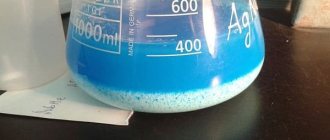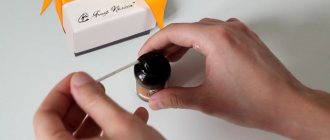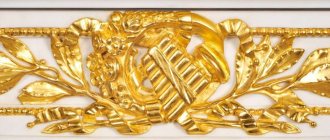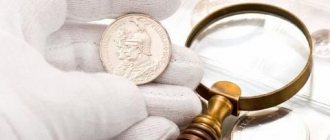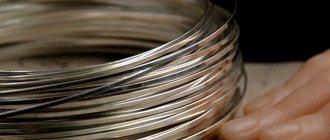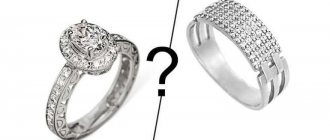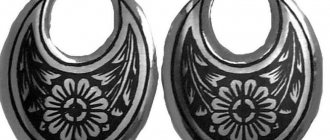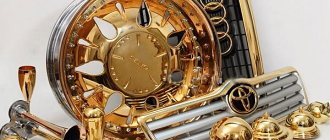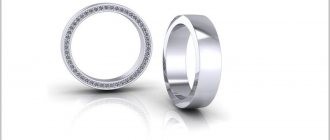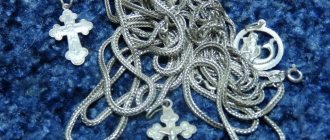To obtain pure precious metal, a technology has been developed to purify it from impurities. It was called refining. During this procedure, the metal goes through several stages of processing, which results in silver, gold or platinum of a given purity.
Silver refining is considered an industrial process, but nowadays white metal refining can be done at home. Typically used for cleansing:
- jewelry scrap silver;
- sludge from its electrical cleaning;
- technological silver-containing scrap;
- “silver foam” from waste from lead factories.
Refining consists of three parts: diluting the silver in nitric acid, solidifying the metal and fusing it, and refining itself by electrolysis (electrolytic method).
Now let's talk about everything in order.
What is silver in and how to extract it?
Silver is a noble metal, one of the aristocratic triad, which also includes gold and platinum. It is quite common in nature: about 60 minerals are known to contain silver. But it can be isolated not only from ore.
Sources of recycled silver
The main sources of secondary silver are products from the electrical and radio engineering industries, printing, photography and film industries, products from the mirror, jewelry and watch industries.
From the household sector, sources of precious metal include scrap jewelry , awards and coins.
In radio and electrical engineering, the following are suitable for silver extraction :
- radio components;
- relay;
- contacts of automatic switches and starters;
- batteries;
- contact relays and ceramic capacitors.
Certain types of solders and contacts can contain up to 99% Ag.
Batteries and resistors
Silver-zinc batteries of the SC series, in which the anode is made of pressed silver oxide powder, are distinguished by a high specific silver content.
For example, the battery of the STs-25 model, weighing 470 g (together with the filled electrolyte), contains 85.5 g of Ag, and the STs-110 model, weighing 1.6 kg, contains 559.783 g of Ag.
In small quantities, technical silver is found in the most common resistors of Soviet times, the MLT series (an abbreviation for “metal film varnished heat-resistant”). For example, an MLT-2 product weighing 2.5 grams contains 5 mg of Ag, which corresponds to 0.16% by weight.
Capacitors and relays
Due to the small size and light weight characteristics of radio components containing silver, it is customary to estimate the amount of Ag in terms of 1000 pieces of each group of radio products.
For some types of capacitors and relays, the Ag content per 1000 pcs. following:
- capacitor K15-5 - about 29.9 g;
- capacitor K10-7V - about 13.6 g;
- relay RES6 – 157 g;
- RSCh52 – 688 g;
- RVM – 897
Films
The printing, photography and film industries “provide” worn and damaged film reels and photo prints .
The main raw materials for extracting precious metals are silver bromide and silver sulphide, ash from photographic paper and photographic prints.
Photographic and film films contain silver, the content of which is standardized per 1 square meter. meter _ For example, every sq. a meter of Micrat 300 film contains 4.68 grams of Ag.
Other devices and items
Silver “secondary” coming from the chemical industry is represented by spent catalysts containing up to 80% Ag, sludge, contact masses and scrap silverware.
Silver-containing waste from jewelry production is generated during machining, smelting and chemical processing of precious metals.
In their composition , they are much poorer than scrap silver and contain from 0.5 to 10% silver, while silver scrap precious metal can contain over 90% (in the case of high-grade jewelry).
Where is it contained?
Starters, switches, SC batteries - this is an incomplete list of where the precious metal is contained.
Among the advantages of Soviet parts:
- Size . Soviet technology is larger in size compared to modern technology. This means that there should be more precious metals in it. At the same time, the sample may be even higher, if we take into account the peculiarities of technological production and the requirements of Soviet standards.
- Prevalence . Soviet technology often still works. Even if it doesn’t work, it’s a rare person who will throw away old Soviet electronics, as the devices acquire the status of antiques.
Refining is a method of obtaining pure metal
You can obtain pure metal using refining, a procedure for purifying silver in several stages. It can be done at home if you know some of the subtleties of the technology.
Various technological and jewelry scraps are used for cleaning.
Refining goes through 3 stages: diluting the metal in nitric acid, hardening, fusion and purification.
The following materials are used:
- glass and melting containers;
- Nitric acid;
- scales;
- filters;
- power unit;
- plastic bottle;
- stainless steel fork;
- insulating tape;
- brass stick.
The procedure must be carried out in a room with good ventilation. Silver is placed in acid diluted with water. As a result of the chemical reaction, silver nitrate will be obtained.
Silver is isolated using copper. It is a catalyst for the process, so pieces of copper are added to the solution. From time to time, take out the pieces and shake off the plaque into a jar. Copper will be added to the silver nitrate by dissolution.
The silver cement will settle to the bottom of the vessel. The solution is passed through coffee filters. Wash the sediment with clean water at least 5 times and then dry it naturally.
By heating the silver cement evenly in the crucible, the individual pieces will be formed into a single piece.
Metal of the highest standard is obtained in an electrolytic bath, into which a cut plastic bottle can be adapted.
A strip of pure silver is welded to a block of silver cement, placed in a tea filter and attached to a brass stick, which will serve as an anode. It is located above the bathtub.
The handle of the fork is wrapped with electrical tape, and the bent end is hung on the edge of the container. The cable from the power supply goes to the plug at one end, and to the brass stick at the other.
Pour in a solution of silver nitrate diluted with water. As a result of the electrolytic reaction, the walls of the bath are covered with silver crystals, which are then fused into one piece. The result will be 999 silver.
Silver Extraction Methods
The ore contains many impurities that need to be separated from the precious metal. For this, 2 main methods are used.
The most commonly used method is cyanidation. The silver is dissolved in cyanide alkali, and the gangue is removed using filters.
The metal settles to the bottom of the container, is washed with water, passed through filters and melted into ingots. Impurities are removed using sulfuric acid.
Another method is silver amalgamation, which is based on the ability of silver to combine with mercury.
The work is carried out using special equipment, where the ore is driven along the surface of mercury along with water. Metal particles moistened with mercury form a compound, which, after squeezing out the mercury, becomes solid. After the mercury is evaporated, the mixture is filtered and the silver is smelted into ingots.
None of these methods makes it possible to obtain silver of the highest standard, so in the future it is further purified.
Obtaining silver from radio components
It is possible to obtain silver from radio components from transistors, televisions, and tape recorders. Excess elements are removed from parts: plastic, parts of contacts, polymers. To dissolve the samples, use nitric acid at a temperature of about 60°C. Hydrochloric acid is poured into the resulting solution. To isolate a precipitate in the form of silver chloride, the solution is heated with constant stirring. Then it is cooled and a little more hydrochloric acid is added to ensure complete precipitation.
The solution should stand for about 12 hours. Then it is filtered, dried and melted at high temperature along with baking soda. The cooled mixture is washed from other components with a stream of water.
Silver is the most conductive and reflective metal on earth, so its value will never diminish.
Why is it impossible to buy silver at a price below the spot price of the metal?
Many investors hope to find a secret way to buy silver at prices below the spot price of the metal on the exchange. The reality is that unless you know an active coin dealer or investment broker, you are unlikely to find silver at this price at retail.
Dealers are wholesale buyers. They can legally obtain silver at just below spot prices because they have expenses to pay and still make a small profit. If you track the price of silver, you will see that it changes every minute. Consequently, the margins between the wholesale and retail levels are extremely thin.
That doesn't mean customers can't find silver at incredibly low prices online or at their local coin store. One example is purchasing heavily worn or damaged items.
Many brick-and-mortar and online dealers who sell rare coins also sell silver. They may lower the price of damaged coins to make room for more expensive coins. So the old saying applies to buying silver: “You get what you pay for!”
Physico-chemical qualities
Silver is endowed with unique physical and chemical properties , which are used in industry to improve the technical characteristics and performance of products for civil and military purposes, for example:
- Silver has the highest thermal and electrical conductivity among metals. In particular, its electrical conductivity (62.5 million S/m) exceeds similar parameters for aluminum (37 million S/m) and gold (45.5 million S/m).
- Under normal conditions, silver is chemically inert to the effects of water and air or other adverse factors that provoke oxidation or corrosion of so-called “ordinary” metals.
- Silver coatings on the surfaces of parts, mechanisms and mirrors have high reflectivity in the optical range of the spectrum .
